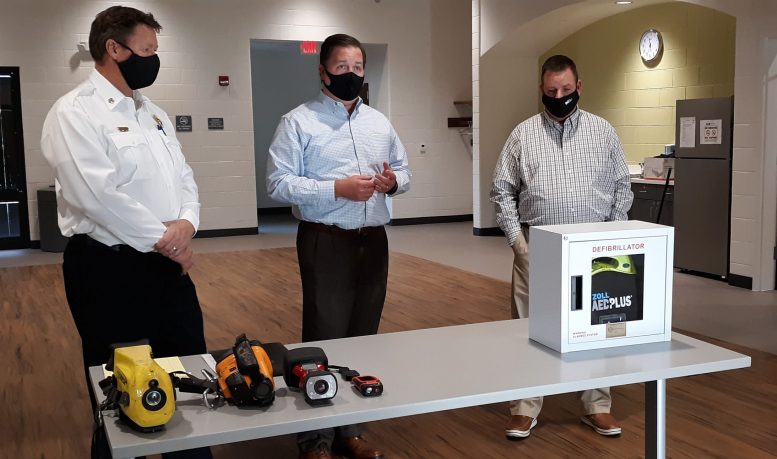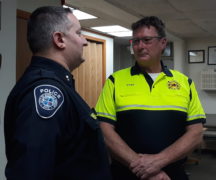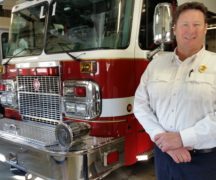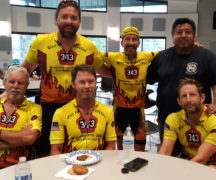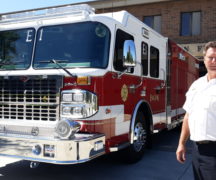By JAN LARSON McLAUGHLIN
BG Independent News
Bowling Green has about 90 automated external defibrillators (AEDs) in public buildings, businesses and schools. But community leaders fear that few people know where the lifesaving equipment can be found.
The community got one more AED on Thursday, after the Bowling Green Rotary Club donated another $1,700 to the Bowling Green Fire Division. This one will be located at the new Veterans Building in City Park.
“These pieces of equipment save lives, there’s no doubt about it,” Fire Chief Bill Moorman said as he accepted the new piece of equipment.
The Rotary Club has donated other AEDs to be stationed throughout the community, encouraged to do so by member Dave Anderson, whose father was reportedly saved by an AED.
“You guys do so much,” Mayor Mike Aspacher said to the Rotary Club members listening to the virtual meeting. “You step up to do positive things for the community.”
“There’s no question this will add value to this building,” Rotary Club President Andy Newlove said.
The donation helps BG Fire Division meet its goal of having many AEDs available in the community – and keeping track of their locations so they can be found when needed.
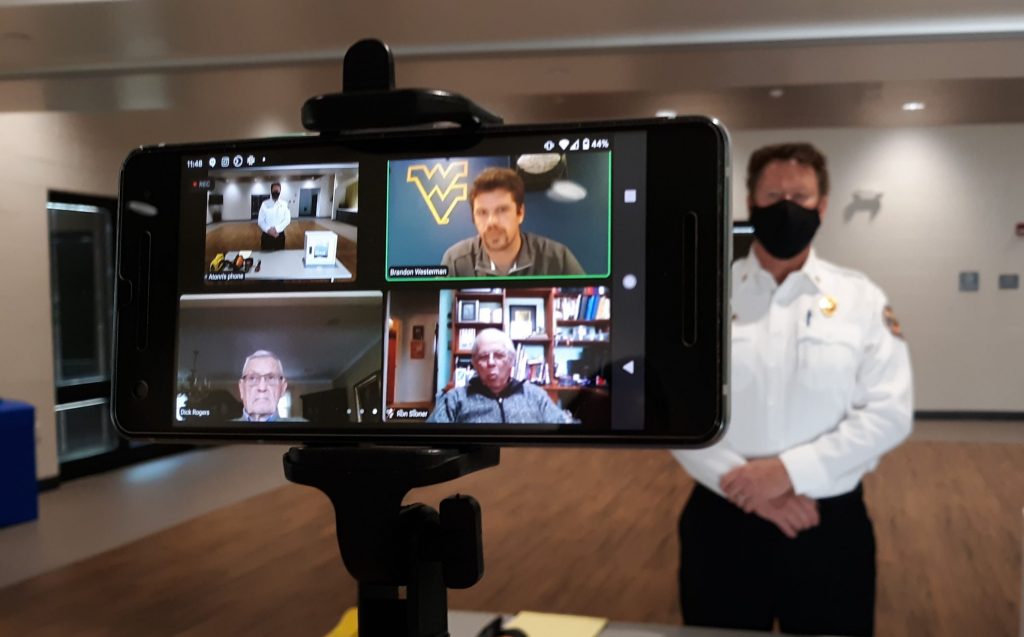
About two years ago, BG firefighter/paramedic Brandon Westerman began an effort to map out where all the AEDs are stationed throughout the city so that information could then be relayed by dispatchers when someone reports a cardiac arrest.
The fire division is working with the city’s GIS department to put the AED locations on a map with detailed directions as to where they can be found.
“We want to get these locations mapped out for dispatchers,” Westerman said to the Rotary Club on Thursday. “That would make the difference between someone living and dying.”
That was proven last year when an emergency call came into the Bowling Green Fire Division of a person down, not breathing at the Ohio Department of Transportation in Bowling Green.
A fire division crew rushed from dropping off a patient at the hospital, to the emergency at ODOT. By the time the paramedics arrived, an AED had already been used by bystanders at ODOT.
“They had already delivered a shock on the AED and the patient was alert and talking to them,” Westerman said. The ambulance crew then took the patient to a Toledo area hospital where a stent was implanted.
Most large factories and gyms are equipped with AEDs. And many public buildings like the senior center and library have them.
AEDs work by automatically diagnosing deadly heart rhythms, then shocking the heart back to an effective rhythm. Most of the units walk the user through the process with verbal and visual assists.
The highest chance of survival from a cardiac arrest takes place when an AED is used within the first five minutes. For every minute after that, the chance of survival drops another 10 percent, Westerman said.
Earlier this fall, Bowling Green Fire Division was recognized for its care of cardiac patients – resulting in better chances of survival. The Lifeline Silver Plus award from the American Heart Association recognized the pre-hospital cardiac care by the fire division.
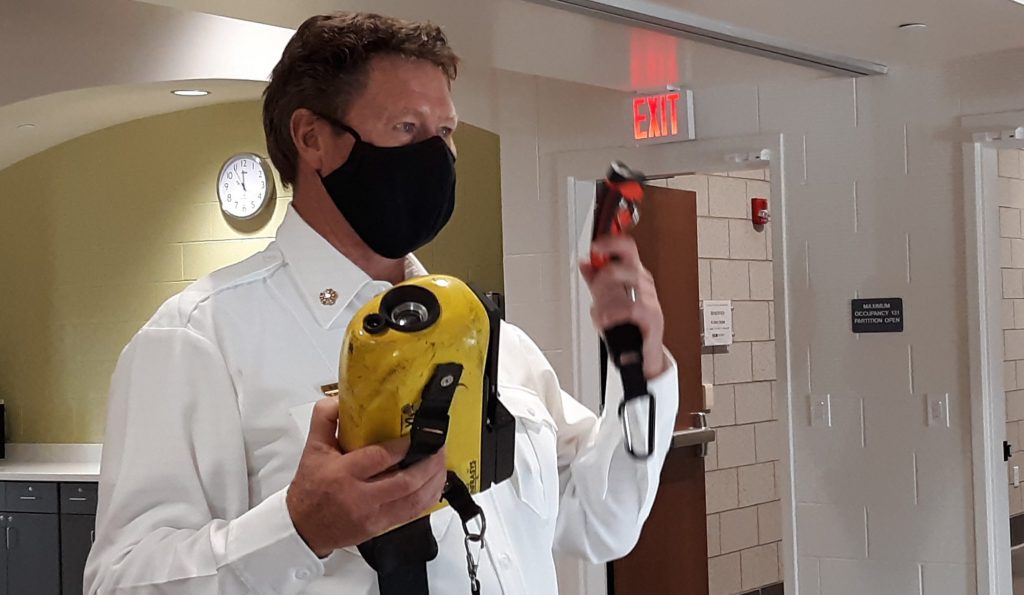
The Rotary Club has not only donated several AEDs to the fire division, but has also helped with the purchase of thermal imaging cameras for firefighters. The first was purchased in 1998.
“These are game changers,” Moorman said. The cameras help firefighters in burning buildings identify people in the structures and hot spots behind walls.
More recently, the Rotary Club helped the division buy 10 more compact handheld thermal imaging cameras, so every firefighter in a burning structure has one.
“What you guys do is amazing,” Moorman told the Rotarians. “The community should be very proud of everything the Rotary Club does.”
Newlove told the chief that the Rotary Club would like to continue helping the fire division with needed equipment.
“We’ll continue to try to come up with ways to make these accessible to you guys,” he said.

